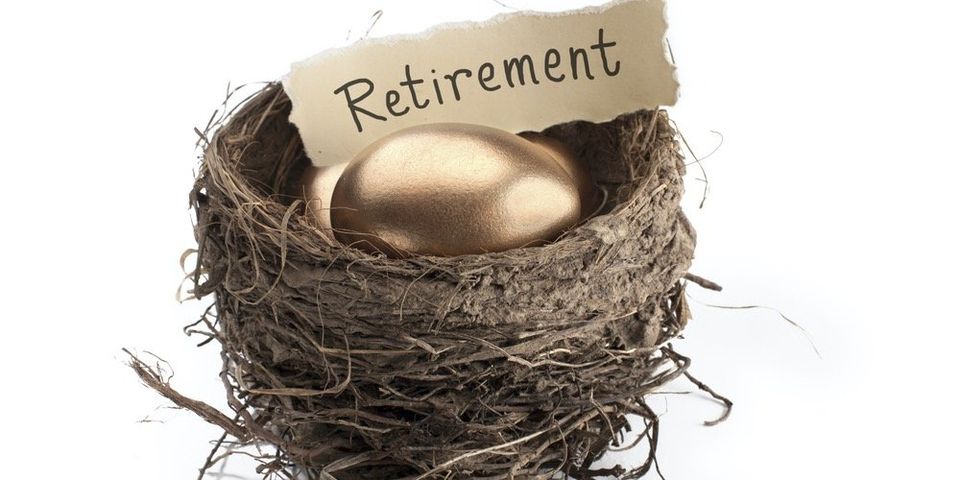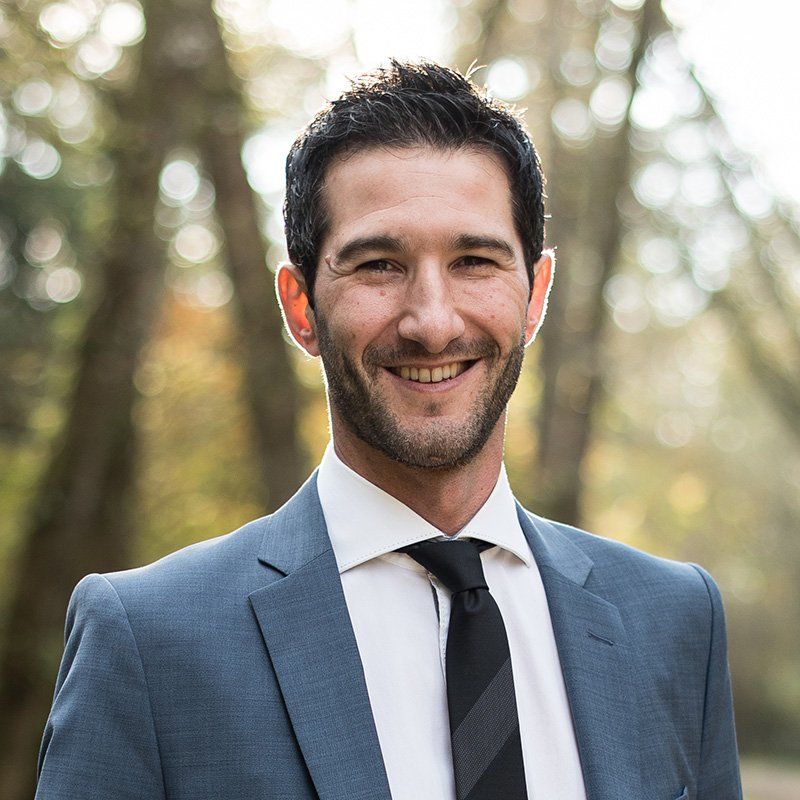Creating A Pension Plan Part 2
Michael Hallett • May 31, 2016

Every good plan starts with building a foundation, the plan will rely on the foundation for years to come. Now that you have decided to pursue the acquisition of real estate (property #1 purchased and successfully rented...check!) as your vehicle to build wealth it's time to stay the course and add the next layer. We will continue on from Part 1 and build upon it. The information here can be duplicated for property #3, 4...and so on.
For this scenario we are considering the acquisition of property #2 at the end of year 3. Based on the estimated market value, the subject property will cost $245,863 to purchase and (in the perfect world) we are buying another one in the same building. Sticking with a simplistic scenario the current market value of property #1 is $245,863. The plan that had been laid out in the beginning comprised the combination of leveraging equity from other rental properties and savings to acquire the 'next' property.
End of Year 3
Estimated market value $245,863
Outstanding mortgage balance $167,227
Access to equity $49,172 (*80% of the market value of the subject property must remain unleveraged, determined by an appraisal)
New mortgage amount on P#1 $196,690
Funds leveraged from P#1 $29,463
Balance from own resources $19,710
20% down payment for P#2 $49,173
Early prepayment penalty P#1 $1,104 (3 months interest)
The balance of funds required were available because instead of making extra payments against your principal residence (up to a maximum of 20%) you were directing that amount into a 'rental property purchase' savings account. Over the past 3 years the account has ballooned to over $20,000.
Through the necessary qualifying process we have now established the new (re-financed) term on property #1 for $196,690 to assist with acquiring property #2. We will also utilize an economic rent letter to help service the debt unless there is an existing renter (and rental/lease agreement ) currently in place.
Purchase Price: $245,863
Down Payment: $49,172 (20% minimum, lender may request more)
Mortgage Amount: $196,690
Variable at 2.40% (P-0.30%) 5 year term CLOSED 30 year amortization
Monthly Mtg Payment: $765.77
Est. Monthly Strata: $250 (costs to operate have increased)
Est. Monthly Property Tax: $117 ($1,400/year)
TOTAL Monthly Payment: $1,132.77
Property Transfer Tax:
$2,917.26 (paid at completion, cannot be rolled into the mortgaged. It is calculated based on 1% of the 1st $200,000 and 2% on the remaining balance.) To calculate Property Transfer Tax use this calculator.
Appraisal:
$300 (required to validate the purchase price because there is no mortgage insurer involved; CMHC, Genworth or Canada Guaranty).
Home Inspection:
$400 (highly recommended)
Title Insurance:
$200 (In short, title insurance is an assurance as to the state of title of a given property. In practical terms, it protects lenders and purchasers against loss or damage suffered due to survey problems, defects in title and other matters relating to title as specified in the policy.
Approx lawyer fees:
$1,500
The cost to acquire the property was $5,317.26
The act of buying rental properties should be treated as a business transaction. The thought of falling in LOVE with a potential property should be purged from your mind completely. When you are search for a desirable property do your homework; look into the Official Community Plan with the city, if you have a higher budget you might want to consider a 2 bedroom unit vs 1 bedroom, know what the rental restrictions are within the strata prior to buying and most importantly contact your Mortgage Broker prior to meeting with Realtor so that he/she can assist with the structuring as all lenders employ different ways of underwriting rental mortgage applications. The numbers have to make sense to give yourself a chance to build your real estate empire.
*Based on today's re-financing guidelines. Please check with your Mortgage Broker before executing your plan.
SHARE
MY INSTAGRAM
Mortgage Brokering meets mountain biking and craft beer. A couple months ago I set for a bike ride with the intention of answering few mortgage related questions, mission accomplished. Any good bike ride pairs nicely with a tasty beer which we enjoyed @parksidebrewery. Hope you see the passion I have for brokering, biking and beer. @torcabikes #mountainbikingmortgagebroker
TEASER alert...at thats what I think they call it in the business. Years ago a wrote a blog called BEERS BIKES AND MORTGAGES. I some how (in my head) blended all 3 topics into 1 blog. Simply put, I enjoy aspects of all 3 with each of them providing something different. I re-united with the talented Regan Payne on a project that I think will shed a bit more light on who I am and what I do. #craftbeer #mountainbike #mortgagebrokerbc #dlccanadainc
I saw this hat on Instagram, that very moment I knew I needed it. As a BC boy born and bred The Outdoorsman hat needed to be added to my collection. As someone who loves BC and most things outdoor, I’m now glad I have a cool hat to wear and fly the flag of BEAUTIFUL BRITISH COLUMBIA. It will be in my bag for all post-exploration celebratory cold pints. If you want to check them out or add one to your collection go to @nineoclockgun ...and yes my facial hair matches the hat as well.
View more

Wondering If Now’s the Right Time to Buy a Home? Start With These Questions Instead. Whether you're looking to buy your first home, move into something bigger, downsize, or find that perfect place to retire, it’s normal to feel unsure—especially with all the noise in the news about the economy and the housing market. The truth is, even in the most stable times, predicting the “perfect” time to buy a home is incredibly hard. The market will always have its ups and downs, and the headlines will never give you the full story. So instead of trying to time the market, here’s a different approach: Focus on your personal readiness—because that’s what truly matters. Here are some key questions to reflect on that can help bring clarity: Would owning a home right now put me in a stronger financial position in the long run? Can I comfortably afford a mortgage while maintaining the lifestyle I want? Is my job or income stable enough to support a new home? Do I have enough saved for a down payment, closing costs, and a little buffer? How long do I plan to stay in the property? If I had to sell earlier than planned, would I be financially okay? Will buying a home now support my long-term goals? Am I ready because I want to buy, or because I feel pressure to act quickly? Am I hesitating because of market fears, or do I have legitimate concerns? These are personal questions, not market ones—and that’s the point. The economy might change tomorrow, but your answers today can guide you toward a decision that actually fits your life. Here’s How I Can Help Buying a home doesn’t have to be stressful when you have a plan and someone to guide you through it. If you want to explore your options, talk through your goals, or just get a better sense of what’s possible, I’m here to help. The best place to start? A mortgage pre-approval . It’s free, it doesn’t lock you into anything, and it gives you a clear picture of what you can afford—so you can move forward with confidence, whether that means buying now or waiting. You don’t have to figure this out alone. If you’re curious, let’s talk. Together, we can map out a homebuying plan that works for you.

Bank of Canada maintains policy rate at 2.1/4%. FOR IMMEDIATE RELEASE Media Relations Ottawa, Ontario December 10, 2025 The Bank of Canada today held its target for the overnight rate at 2.25%, with the Bank Rate at 2.5% and the deposit rate at 2.20%. Major economies around the world continue to show resilience to US trade protectionism, but uncertainty is still high. In the United States, economic growth is being supported by strong consumption and a surge in AI investment. The US government shutdown caused volatility in quarterly growth and delayed the release of some key economic data. Tariffs are causing some upward pressure on US inflation. In the euro area, economic growth has been stronger than expected, with the services sector showing particular resilience. In China, soft domestic demand, including more weakness in the housing market, is weighing on growth. Global financial conditions, oil prices, and the Canadian dollar are all roughly unchanged since the Bank’s October Monetary Policy Report (MPR). Canada’s economy grew by a surprisingly strong 2.6% in the third quarter, even as final domestic demand was flat. The increase in GDP largely reflected volatility in trade. The Bank expects final domestic demand will grow in the fourth quarter, but with an anticipated decline in net exports, GDP will likely be weak. Growth is forecast to pick up in 2026, although uncertainty remains high and large swings in trade may continue to cause quarterly volatility. Canada’s labour market is showing some signs of improvement. Employment has shown solid gains in the past three months and the unemployment rate declined to 6.5% in November. Nevertheless, job markets in trade-sensitive sectors remain weak and economy-wide hiring intentions continue to be subdued. CPI inflation slowed to 2.2% in October, as gasoline prices fell and food prices rose more slowly. CPI inflation has been close to the 2% target for more than a year, while measures of core inflation remain in the range of 2½% to 3%. The Bank assesses that underlying inflation is still around 2½%. In the near term, CPI inflation is likely to be higher due to the effects of last year’s GST/HST holiday on the prices of some goods and services. Looking through this choppiness, the Bank expects ongoing economic slack to roughly offset cost pressures associated with the reconfiguration of trade, keeping CPI inflation close to the 2% target. If inflation and economic activity evolve broadly in line with the October projection, Governing Council sees the current policy rate at about the right level to keep inflation close to 2% while helping the economy through this period of structural adjustment. Uncertainty remains elevated. If the outlook changes, we are prepared to respond. The Bank is focused on ensuring that Canadians continue to have confidence in price stability through this period of global upheaval. Information note The next scheduled date for announcing the overnight rate target is January 28, 2026. The Bank’s next MPR will be released at the same time.







































































































